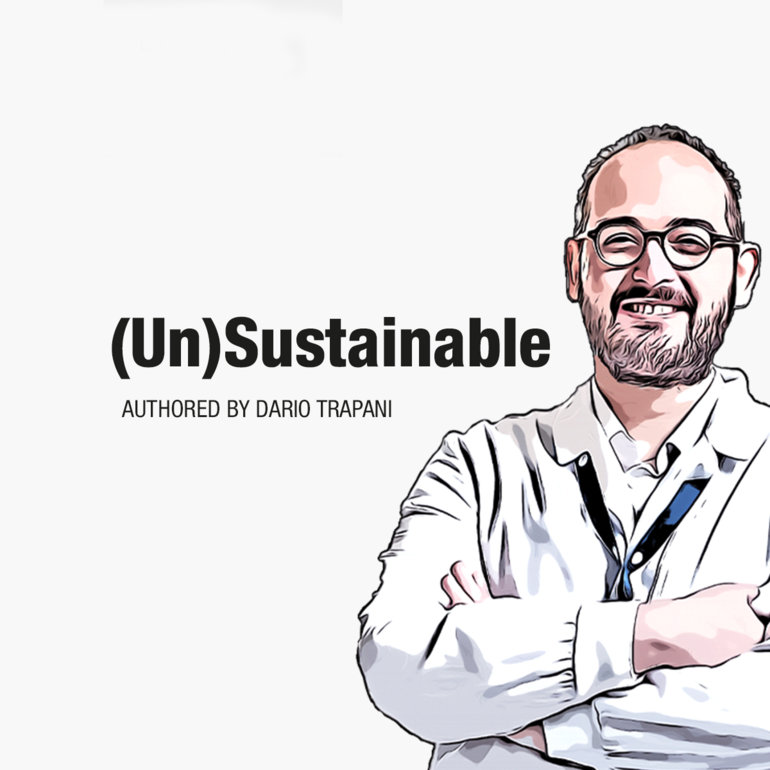Recent research suggests a substantial reduction in greenhouse gas emissions with de-escalation per cancer patient
For many people, the first association with the term radiation is risk – i.e., the risk of nuclear disasters or the risk of radiation-induced cancer. In oncology, we have learned to benefit from radiation in the form of radiotherapy to help patients and treat, in many cases even cure, cancer. Of course, radiotherapy is not free of additional risks and side-effects like sore skin, tiredness, nausea or lymphoedema. But what about its environmental risk?
It is estimated that mean greenhouse gas emissions associated with a standard 25-fraction radiotherapy (external beam radiotherapy) in curative settings is around 4300 kg CO2 equivalent, with variations between 3300-5000 tonnes depending on tumour type, which corresponds to only 0.0035 disability-adjusted life years (DALYs) per treatment course (Lancet Oncol. 2024 Jun;25(6):790-801). To put that in context, 285 people need to undergo radiation therapy to lead to a loss of one year in good health. It might not sound very impactful until we realise that around 50% of patients with cancer will require some form of radiotherapy during the span of their disease. With approximately 20 million new cancer cases a year and 10 million people receiving radiotherapy , it contributes to over 40,000 DALYs.
Looking at what is the main contribution to the carbon footprint of radiotherapy, with no surprise, the main carbon emitter is building energy use, which comprises 74% of emissions, followed by patients and personnel transit (25.7%). Supplies play a minor role with less than 1% impact, while heating, ventilation and air conditioning are the main consumers of energy.
Patient travel is a significant contributor to (un)sustainability of radiotherapy. Most of the treatment is delivered in the outpatient setting and requires daily travel to the treatment center. For example, a German study collecting 4-year geographic data of breast cancer patients attending their radiotherapy treatments in Germany estimated that they had to travel an average distance of 37.2 km for each radiation fraction, resulting in around 6kg CO2 per fraction and over 150 kg of CO2 equivalent in total (Strahlenther Onkol. 2024 Sep 24. doi: 10.1007/s00066-024-02303-w).
Comparing radiotherapy to curative surgery, some research suggests that there is not a “greener” option per se, but the environmental impact of cancer care depends on the tumour type or treatment settings. For instance, it has been calculated that robotic-assisted prostatectomies emit about 47 kg CO2 per procedure, and laparoscopic prostatectomies emit about 60 kg CO2 (Prostate Cancer Prostatic Dis. 2024 Jun;27(2):272-278). In another study, stereotactic radiotherapy for treatment of early-stage lung cancer led to nearly three times lower emission of CO2 equivalent (172 kg vs 547 kg) compared to video-assisted thoracic surgery (Radiother Oncol. 2025 Jan:202:110601).
To reduce the environmental impact of cancer treatments, hypofractionation – i.e., the use of fewer radiation treatment sessions and higher doses per session – may be an attractive strategy. Many trials in multiple cancer types showed that hypofractionated schemes offer the same antitumour efficacy, with shorter duration of treatment and even better quality of life (Lancet. 2019 Aug 3;394(10196):385-395; Lancet. 2020 May 23;395(10237):1613-1626; N Engl J Med. 2010 Feb 11;362(6):513-20). Consistently with shorter treatment, the environmental impact is also significantly reduced.
Hypofractionated treatment simulations suggested a substantial reduction in greenhouse gas emissions. For example, by reducing the number of fractions from standard 25-33 to 15, we can also reduce greenhouse gas emissions by around 40%, while further reduction to only five fractions can lead to approximately 70% reduction. Similar improvements are also predicted for other tumour types. The savings might be even more significant if zero-carbon electricity were used. Hypofractionation allows for reduced patient travel and shorter occupations of facilities, reducing the environmental impact of both travel and building energy usage.
Another strategy may be to optimise the geographic access to radiation facilities so that both patients and the healthcare workforce reduce travel distances, with a potential benefit on individual resources (i.e., time, costs) and quality of life. The introduction of telehealth has been shown to improve environmental impacts and patient satisfaction in various settings (NPJ Digit Med. 2023 May 9;6(1):87). Still, according to simulations, it can help reduce the ecological impact of radiation therapy by less than 0.2% only. Combining all strategies could lead to 45% reduction of fossil fuel depletion and nearly 75% reduction of PM 2.5 equivalent emission (Lancet Oncol. 2024 Jun;25(6):790-801).
Observed trends toward treatment de-escalation and use of moderately or even highly hypofractionated schemes are leading to considerable savings in the case of greenhouse emissions and are helping make radiotherapy more environmentally friendly.





